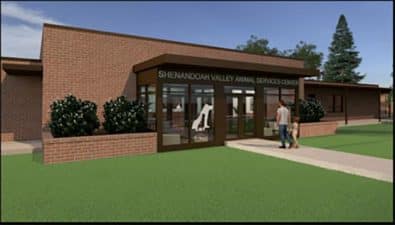
“We need to plan for a brighter future. Right now, we can do better than high unemployment and layoffs. And in years to come, we can do better than low paid service jobs and rising costs for dirty energy. Solar, wind, and bio-energy. They can all happen right here at home in the Valley and Highland County,” said Curren, whose three-part plan is based on improving energy efficiencies in industry, in transportation and at home, the creation of clean energy and the better utilization of natural resources.
Ultimately, it’s about jobs – and good-paying ones.
“We can have high paying jobs and keep our rural and small-town way of life, too, if we harness the power of the clean energy economy, which could be bigger than the internet boom was,” Curren said.
“The Internet boom created millions of jobs in America and many in Virginia, but these jobs were mostly in big cities – few of them came to rural areas like ours. This time, we can’t afford to let the clean-energy boom pass us by. With our strong agriculture, colleges and universities, and available workforce, we can ride the coming wave and create hundreds of high-paying green jobs.
“But the time to get started is now,” Curren said.
The Curren Jobs Plan
1. Do More Work with Less Energy
The cheapest energy is the energy we never use. The quickest and easiest way to save energy is to increase the energy efficiency of buildings, of transportation, and of the products we buy.
Building Efficiency
Throughout the region, architects are designing and contractors are building energy efficient structures. Companies are manufacturing energy efficient buildings and energy efficient building supplies, like structural insulated panels and insulated windows. To encourage landlords to increase the efficiency of their units, localities can consider using an energy]rating system such as Energy Star for Buildings, or requiring utility costs to be disclosed, allowing tenants to make housing choices based on energy use. Communities are converting to energy]efficient street lights and traffic lights.
Home Efficiency
We can make the average home in our area up to 50 percent more energy efficient with a $5,000 to $10,000 investment in weatherization. But few homeowners, especially in today’s economy, have the ready cash upfront to cover this expense. State law to the rescue: localities are now allowed to lend funds from federal and other grant sources to area residents to weatherize their homes. The loans would be paid back from the energy savings that are generated by the efficiency upgrades over a period of 10 or 20 years, and the federal funds would also be used to train area workers in retrofitting and energy efficiency upgrading.
Transportation and Smart Development
We could get thousands of vehicles off the road and save millions of gallons of gasoline and diesel fuel each year by putting passenger and freight traffic onto trains. And we could reduce the distances that we need to travel on a regular basis by encouraging new development to be compact, walkable, and to mix both residential and business uses in the same area so that more people can shop and work near where they live.
Smart Grid Technology
Multiple electric utilities serve the region. These include investor]owned utilities, municipally]owned utilities, and electric cooperatives. We can encourage each to upgrade to a smart electricity grid. The smart grid can allow consumers to monitor and reduce energy use, and can promote the proliferation of small]scale energy production right in our homes or businesses, and if we produce more than we use, we can sell the excess back to the utility at market rates. And to advance the installation of the smart grid, broadband access needs to be available to all homes and businesses in the region to enable two]way communication between building and utility. While a broadband spine has already been built throughout much of the region, we need to finish building the “last mile” that will connect the spine with homes and businesses in the district.
2. Create Clean Energy and Decentralize Energy Production
Efficiency gains alone are not sufficient to meet our need for energy independence. We need to tap all of the energy sources that exist in the region. Right now, most of our energy comes from large centralized power plants that may be located out of state. To use energy more efficiently and harness clean power, we’ll need to move to a more dispersed, community]focused approach that takes advantage of local energy sources: Not one big power plant, but many small local ones.
Bio]refineries/Bio]power plants
Bio]refineries and bio]power plants can be strategically located throughout the region using crops grown by local farmers. It makes most sense for the production facilities to be located within 30 miles of the farms that provide the raw materials, or feedstocks. Feedstock producers could even share in the ownerships of these power plants or bio]refineries, allowing profits to circulate more widely in the local community. Entrepreneurs in Rockingham and Augusta Counties could build bio]refineries and power plants on a small scale without adversely affecting market prices for food and animal feed. Bio]refineries could produce similar products to oil refineries, providing fuel for transportation as well as raw materials for bio]plastics.
Landfill Gas]To]Energy projects and Solar power
Closed landfills in the region can be harvested for methane, either to produce fuel or electricity. Where feasible, these landfills could also be the site for large]scale solar production. Solar energy can play an important role in reducing peak demand, especially during the summer months where the heat of the sun provides the need for the air conditioning that can be powered by the light of the sun. Large roofs, such as those on school buildings and shopping malls, could provide locations for cost]effective solar installations.
Wind and Hydro Power
Similarly, small]scale wind turbines and micro]hydro facilities can help reduce consumption from the grid when properly located and could be encouraged throughout the region. Creating a growing market for wind and water turbines could help attract manufacturers to our area.
Waste]to]Energy Projects
Wastewater treatment plants and farms with concentrated amounts of manure—notably poultry and dairy farms—can harvest the methane produced by the waste and convert it into energy. The by]product of this conversion is fertilizer, and a benefit of this conversion is that it turns a liability into an asset, producing energy while protecting our region’s rivers, streams, lakes and ponds.
3. Use our Natural Resources More Effectively
We are an area blessed with abundant fields and forests as well as unspoiled landscape that is rare on the East Coast. We should build on these distinctive strengths to create good local jobs and business opportunities.
Locally Grown Food
Is your lettuce from Craigsville or California? Locally grown food not only provides increased nutritional benefits to eaters and an improved market for our farmers, but it reduces the energy required to import food from across the country or even from abroad. We need to make access to locally grown food easier, and we can make efforts to match hospitals, schools and restaurants with local producers. Changes in food processing regulations can create a more level playing field for smaller local producers, allowing them to sell more food to area families at a lower cost.
Local Manufacturers
Our area boasts many skilled craftspeople who now make furniture and other products from wood for the local market as well as for export. Harvesting our sustainable forests, we can provide materials for even more local furniture as well as building supplies and other wood products. And our farms can grow crops that provide raw materials for bio]plastics that we can manufacture into tableware and other household products.
Eco] and Agri]Tourism
As the least developed county and most unspoiled area in the state, Highland County is ideally suited to attract visitors for hiking and other outdoor activities, as well as nature study. The agricultural powerhouses of Augusta and Rockingham Counties can reach out to visitors to take advantage of rising interest in local food and Virginia wine.










